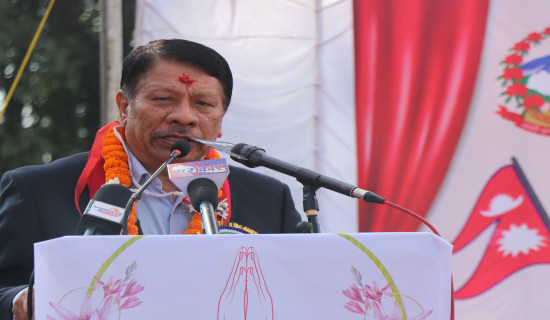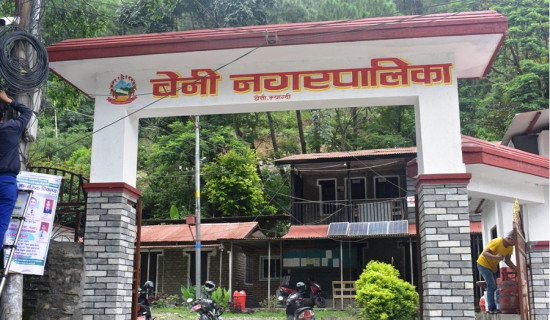- Tuesday, 26 November 2024
Rais in Khalsa, Dhankuta, busy marking Papani festival
By Our Correspondent,Hile, Nov. 26: People of the Rai community of Khalsa in Shahidbhumi Rural Municipality, Dhankuta, are now busy celebrating the Papani festival.
Observed from the first Tuesday after Kartik Purnima, this festival marks the joy of harvesting new crops in the Khalsa region of Dhankuta.
According to Mundhum scriptures, Rai people worship their ancestral deity Khudahanga for 15 days during the festival.
The locals also pay homage to their ancestral spirits, performing rituals and celebrating Papani with continuous singing and dancing for six days and nights.
To fulfil their wishes, they release a pair of doves as an offering to Khudahanga.
The Kirat Rai community worships the deity Khudahanga and dances in tune with the beats of drums and cymbals during the festival.
The dance involves standing shoulder-to-shoulder and moving three steps forward and three steps back in sync with the rhythm.
Dilli Raj Rai from Ward- 6 of Sahidbhumi Rural Municipality in Aankhisalla said that the custom of honouring deities and ancestors is deeply rooted.
He further added, “Just as other ethnic groups perform rituals to honour their ancestors and deities according to their traditions, we also perform rituals in our way after harvesting new crops.”
Over the week, fairs are organised on different days in Khoku, Chhintang and Aankhisalla’s forts within Sahidbhumi Rural Municipality.
The festival is celebrated by individuals from the Rai subgroups Chyulung and Namchahang, as well as by the Bantawa Rai residing in the Khalsa area. However, Bantawa Rais outside Khalsa do not celebrate this festival.
According to one local, Narendra Rai, Papani dance is gradually disappearing.
He said, “This tradition relies on the involvement of the older generation, and as they migrate to new settlements, the customs are fading.”
He further explained that the lack of Bijuwas (those who sing Mundhum chants) and the younger generation’s neglect of the tradition had worsened the situation.
Sahidbhumi Rural Municipality has a predominantly Rai population, constituting about 80 per cent of the total population.
Among them, approximately 50 per cent celebrate this festival. Starting last Tuesday, the festival will officially conclude next Tuesday morning.
Rituals and celebrations take place in the early morning, but participants significantly increase in the evening.
In recent years, the number of people visiting to observe the festival and local fairs has been increasing annually. However, the number of people actively celebrating and performing the Papani dance is steadily declining, according to the locals.
















